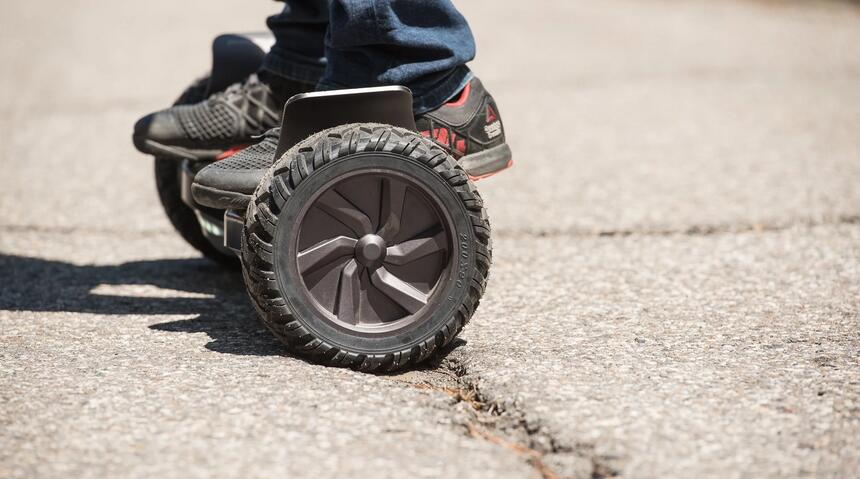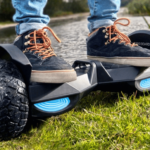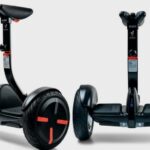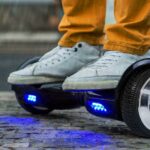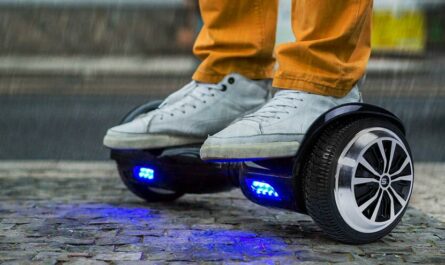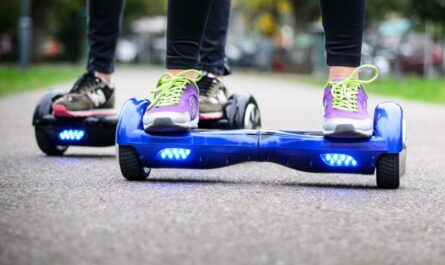Hoverboards have secured their niche as an exciting blend of personal transportation and entertainment. These self-balancing marvels capture the imagination of all ages, resembling something pulled straight from science fiction. But as with any substantial piece of technology, potential owners often ponder one pertinent question—how heavy is a hoverboard? This seemingly simple query unfolds into a spectrum of considerations that could affect how you choose, use, and enjoy your hoverboard.
Table of Contents
Understanding Hoverboard Weight
Ranging far beyond just a number on a scale, a hoverboard’s weight is a blend of several carefully selected components, each contributing to the final heft of your ride.
- Structure and frame materials: These foundational elements are typically crafted from high-grade aluminum or even steel, which offer a careful balance between durability and heft. The choice of materials impacts both the weight and strength of the hoverboard.
- Battery size and type: Serving as the heart of the hoverboard, batteries vary in size and capacity. Larger batteries offer extended range but add significant weight to the unit. Manufacturers strive to strike a balance between power and weight to ensure optimal performance.
- Wheel size and motor type: Wheels and motors dictate the hoverboard’s mobility and overall riding experience. Larger wheels enhance stability, particularly on uneven terrain, and require robust motors to provide the necessary power. These components contribute to the weight of the hoverboard.
- Additional features: Hoverboards often come with additional features that are attractive to users, such as Bluetooth speakers, LED lights, or smartphone apps for customization and control. While these features enhance the overall experience, they may add extra weight to the hoverboard.
To contextualize these factors, let’s take a closer look at different hoverboard models and their characteristics in terms of weight.
Why Hoverboard Weight Matters?
Hoverboard weight is not purely an arbitrary statistic but serves as an influential factor in your overall riding experience. Let’s explore why hoverboard weight matters.
1. Portability
The weight of a hoverboard directly affects its portability. If you plan to use your hoverboard for commuting, storage convenience becomes an important consideration.
Lighter hoverboards are easier to carry or transport, making them more suitable for daily commutes or utilizing public transportation. However, if you primarily ride within the confines of your home or have dedicated storage space, the weight may be of less concern.
2. Age Suitability
Hoverboards come in various sizes and weight categories to cater to different age groups and body types. Lighter models are more manageable for children, allowing them to handle and control their hoverboards safely.
For adults, heavier hoverboards may provide a more stable and robust ride due to their larger size and construction.
3. Speed and Maneuverability
In general, lighter hoverboards tend to be more agile and responsive, offering quicker acceleration and agility. They are well-suited for riders who prioritize maneuverability and enjoy a dynamic riding experience. These models are ideal for indoor riding, navigating crowded areas, or performing tricks and stunts.
Conversely, heavier hoverboards offer a more stable ride, allowing riders to maintain balance at higher speeds. While these models may sacrifice some agility, they excel in providing a smoother ride and enhanced handling, especially on rough or uneven surfaces.
4. Incline Capabilities and Off-Road Performance
Weight significantly affects a hoverboard’s ability to handle inclines and off-road conditions. As a general rule, heavier hoverboards have more substantial motors and larger wheels, enabling them to conquer steeper inclines with ease. This makes them ideal for riders frequently encountering uphill paths or hilly terrains.
Off-road hoverboards, designed explicitly for tackling challenging terrains, often have robust construction and larger wheels to provide superior traction and stability on uneven surfaces. The added weight in these models ensures grip on gravel, grass, or dirt trails, enhancing the riding experience when venturing off the beaten path.
5. Stability and Comfort
Hoverboard weight is a significant factor in the overall stability and comfort of the ride. Heavier hoverboards tend to offer increased stability, making them easier to balance, particularly for beginners or those lacking confidence in their riding skills. The added weight provides a solid base and smoother ride, minimizing vibrations and bumps experienced while navigating uneven surfaces.
However, lighter hoverboards can also be stable, especially for experienced riders who are accustomed to the nuances of balancing. These models are great for quick and nimble maneuvers and for riders who prioritize portability.
Determining the appropriate weight for your hoverboard depends on your desired riding experience, intended terrains, and personal preferences. Consider these factors carefully to select a hoverboard that effectively balances stability and maneuverability according to your needs.
6. Hoverboard Weight and Battery Life
Battery life is a crucial aspect of the hoverboard experience. The weight of the hoverboard has a direct impact on battery consumption and range.
Heavier hoverboards require more power to move due to their increased weight. As a result, they tend to consume more energy, leading to shorter battery life and potentially reducing the distance the hoverboard can travel on a single charge.
Riders who rely on longer rides or extended sessions without recharging should consider this trade-off and choose a lightweight model with a larger battery capacity to maximize their riding time.
On the other hand, lighter hoverboards tend to conserve battery life for longer rides due to their reduced power requirements. While they offer extended range, riders should also consider that lighter models may have a smaller battery capacity. This could affect overall ride time, particularly on more demanding terrains or at higher speeds.
7. Maintenance and Hoverboard Weight
Hoverboard weight can influence the ease and cost of maintenance. It is important to consider the weight and size of your hoverboard when it comes to maintenance, storage, and transportation.
Heavier hoverboards may require more effort to move around when not in use. If you have limited storage space or need to transport your hoverboard frequently, a lighter model might be more convenient. Lighter hoverboards are easier to carry, fit into vehicles, and store in smaller spaces.
For heavier hoverboards, it may be necessary to invest in accessories such as storage racks or specialized carrying cases to ensure safe and convenient storage. These accessories can help protect your investment and make transportation more manageable.
When it comes to maintenance, the weight of the hoverboard can impact maneuverability for cleaning or performing repairs. While not a significant concern, heavier hoverboards may require extra care during maintenance to ensure their longevity.
Average Weight of Hoverboards
When it comes to hoverboards, the average weight can vary depending on the model, features, and intended use. Here’s a breakdown of the average weights for different types of hoverboards:
| Hoverboard Type | Average Weight (lbs) | Wheel Size | Battery Life | Notable Features |
|---|---|---|---|---|
| Standard/Classic | 20-25 | 6.5″ | 10-12 miles | LED lights, basic design |
| All-Terrain/Off-Road | 25-30 | 8.5″ | 12-15 miles | Rugged tires, water resistance, Bluetooth speakers |
| Kid-Specific | 15-20 | 4.5″ | 6-8 miles | Lightweight design, LED lights, designed for smaller riders |
| Performance/Advanced | 28-35 | 7″-8″ | 10-12 miles | Bluetooth connectivity, mobile app integration |
Please note that these weights are approximate averages, and actual weights may vary slightly depending on the manufacturer and specific model. It’s always a good idea to check the specifications provided by the manufacturer to get the exact weight of the hoverboard you are considering.
These weight ranges provide a general idea of what to expect for each hoverboard type. Hoverboards designed for off-road use or with advanced features tend to be a bit heavier due to their sturdier build and larger wheels. On the other hand, kid-specific models prioritize lightweight design for ease of use by younger riders.
Maximum Weight Capacity
Hoverboards have specific weight limits that indicate the maximum load they can safely carry. As a rider, it is important to consider both your body weight and any additional weight from items you may be carrying, such as backpacks or other belongings.
Most hoverboards have weight capacities ranging from 100 to 220 pounds, ensuring support for a wide range of riders. Heavy-duty models can often accommodate higher weight limits, sometimes up to 265 pounds.
When selecting a hoverboard, make sure to consider your weight and select a model with an appropriate weight capacity to ensure maximum safety and optimal performance.
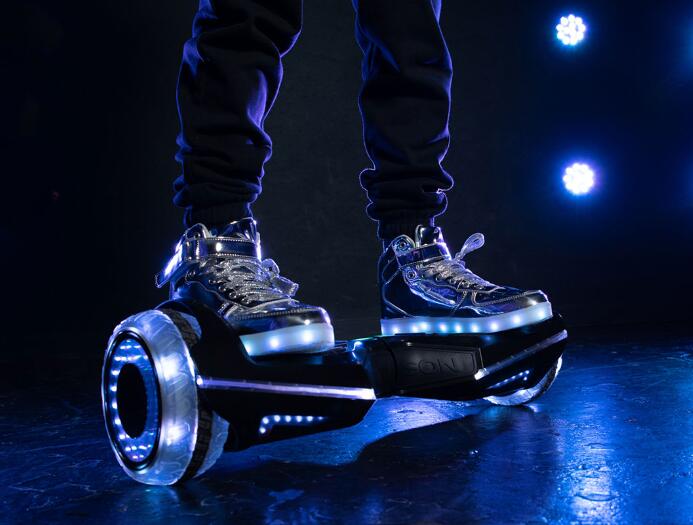
How to Choose the Right Hoverboard Weight for You?
Now that you have a comprehensive understanding of hoverboard weights and how they impact performance and usability, let’s delve into some considerations to help you choose the right hoverboard for your needs. By considering the following factors, you can make an informed decision and ensure an enjoyable and safe riding experience.
1. Intended Use
First and foremost, determine how you plan to use your hoverboard. Will you primarily be using it for commuting, recreational purposes, or off-road adventures? The intended use will influence the features and specifications you should prioritize.
For commuting or casual riding on smooth surfaces, a standard hoverboard with a wheel size of 6.5 inches and an average weight range of 20 to 25 pounds will be suitable. These models are often more lightweight and maneuverable. This makes them perfect for navigating through city streets or indoor areas.
If you’re an outdoor enthusiast looking to explore rough terrains, consider an all-terrain or off-road hoverboard. These models typically have larger wheels (around 8.5 inches) and a weight range of 25 to 30 pounds. This allows for better traction and stability on uneven surfaces. They may also come with additional features like water resistance and durable construction.
2. Rider’s Age and Weight
The age and weight of the rider are crucial factors to take into account when selecting a hoverboard. Most hoverboards have weight limits ranging from 100 to 220 pounds. If you’re purchasing a hoverboard for a child, make sure to choose a model with a weight capacity that suits their size and weight to ensure safety and optimal performance.
For adult riders or those on the heavier side, consider models with higher weight capacities. Heavy-duty hoverboards, designed for riders weighing up to 265 pounds, provide the necessary stability and performance for larger individuals.
3. Battery Life and Range
Battery life and range are significant considerations, especially if you plan on using your hoverboard for longer rides or commuting. Pay attention to the specifications provided by the manufacturer to determine the estimated range on a single charge and the battery life of the hoverboard.
Hoverboard battery life can vary between 1 to 3 hours, depending on factors such as weight, terrain, speed, and features in use. If you anticipate longer rides or require a hoverboard that can last a full day of commuting, opt for models with higher battery capacities.
Keep in mind that heavier hoverboards often consume more battery power due to the additional weight they need to move. Consider the right balance between weight, battery capacity, and the desired range to meet your specific usage requirements.
4. Safety Features
Safety should always be a top consideration when choosing a hoverboard. Look out for safety features and certifications that ensure the hoverboard meets industry standards. These may include UL2272 certification, which verifies that the hoverboard’s electrical systems and batteries have been tested for safety.
Other safety features to consider include LED lights for visibility in low-light conditions and non-slip foot pads to enhance stability and grip while riding.
5. Additional Features
Hoverboards often come with a variety of additional features that can enhance the overall riding experience. These features may include Bluetooth speakers, mobile app connectivity, LED lights, and even built-in carrying handles or straps. Consider which features are important to you and align with your preferences.
While additional features can enhance your enjoyment, remember that they may also add to the overall weight of the hoverboard. Strike a balance between desired features, weight, and performance to find the optimal hoverboard for your needs.
6. Budget
Last but not least, consider your budget when choosing a hoverboard. Prices can vary depending on the brand, features, and specifications. Determine your budgetary constraints and explore options that fall within that range. While it’s essential to ensure value for your money, prioritize quality and safety over the lowest price.
Remember to consider post-purchase costs as well, such as potential maintenance and repair expenses. Opting for a reputable brand that offers warranties and reliable customer support can provide peace of mind and reduce unforeseen costs in the future.
How to Check the Weight of Your Hoverboard?
If you already own a hoverboard or are curious about its weight, you can easily measure it using a bathroom scale or a luggage scale. Follow these simple steps:
- Place the scale on a flat and stable surface.
- Carefully lift and position your hoverboard on the scale.
- Make sure the hoverboard is balanced and not touching anything else.
- Note the weight displayed on the scale.
This method provides a straightforward way to measure your hoverboard’s weight accurately.
Hoverboard Weight and Airline Travel
If you plan to take your hoverboard on a flight, it is essential to consider airline regulations regarding hoverboards. Due to safety concerns surrounding lithium-ion batteries, which power hoverboards, many airlines have specific rules and restrictions in place.
Before booking your flight, check with your airline to ensure they allow hoverboards as carry-on or checked baggage. Some airlines may have weight restrictions for both options and in certain cases, they may outright ban hoverboards. Compliance with these regulations is crucial to prevent any inconvenience or issues during your travels.
For specific guidelines, consult the relevant airline’s website or contact their customer service for the most up-to-date information.
Frequently Asked Questions (FAQ)
Let’s address some common questions concerning hoverboard weight:
Can children carry their own hoverboards?
Most children can handle carrying their own hoverboards, especially if they are using a lightweight model designed specifically for smaller riders. Kid’s models are generally lighter and easier to manage, providing an enjoyable and safe riding experience for children.
Does heavier mean better quality?
Not necessarily. While sturdier construction often contributes to a slightly heavier weight, the quality of a hoverboard is determined by the combination of various factors, such as design, materials used, battery life, and overall performance. Technological advancements have allowed manufacturers to produce high-quality hoverboards that remain relatively lightweight.
Conclusion
Understanding hoverboard weight is crucial when it comes to choosing the perfect board for your needs. The weight of a hoverboard influences its portability, suitability for different age groups, battery life, and performance. By striking a balance between weight and other factors, such as battery life, speed, and stability, you can ensure that your hoverboard enhances your overall riding experience.

